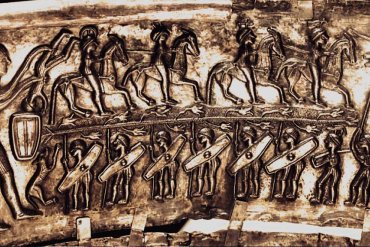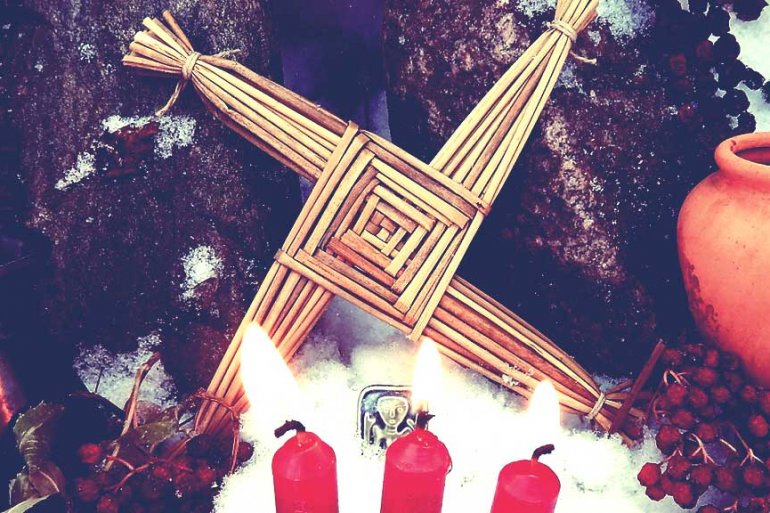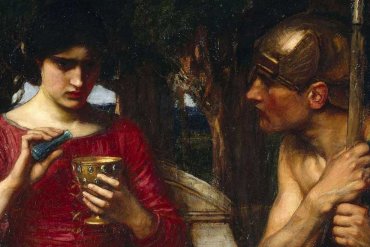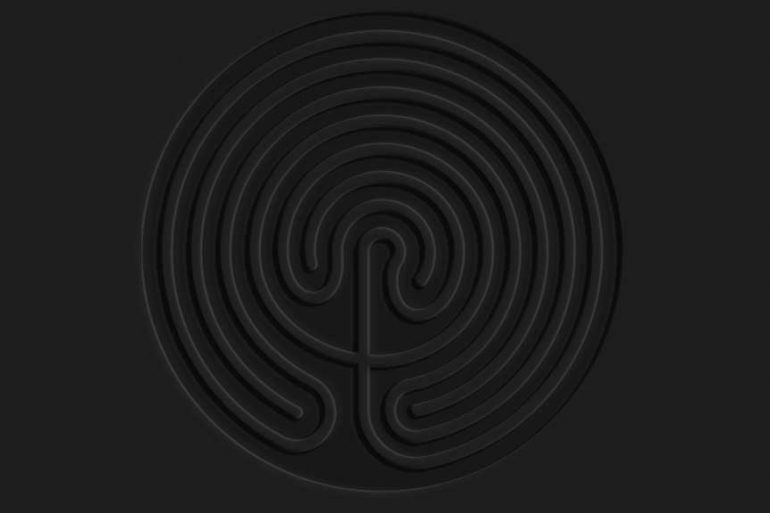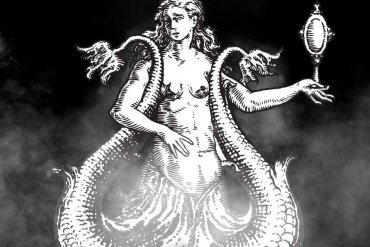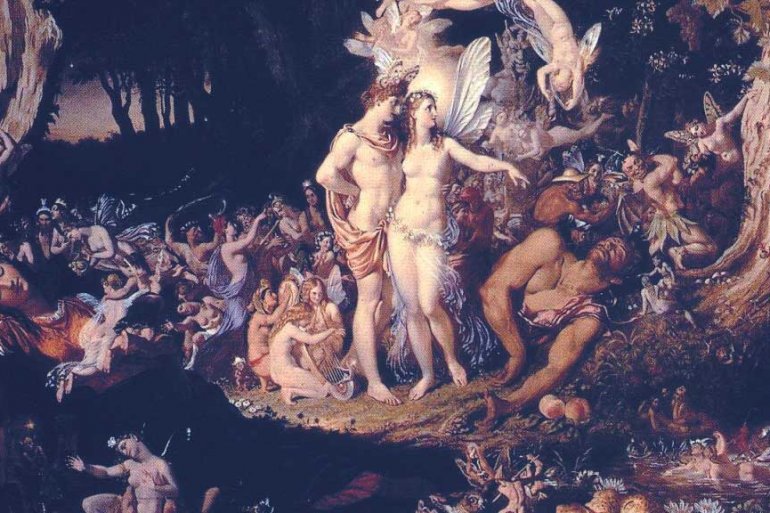An enigmatic depiction of the golden fleece quest: an Athenian Red-figure cup discovered in 1834 and attributed to the Athenian painter Douris (c. 480 BC) shows in its interior the goddess Athena who watches as a huge serpent disgorges a man, alive. Behind them is a tree with a ram’s skin in its branches. These clues assure us that the hero is Jason. The artist has also taken care to...
Occult knowledge and ancient wisdom. What was Parsifal seeking in Wolfram Eschenbach’s poem that was referred to as “the Grail”? A stone ? The Lapsis exillis? It is also said that a pagan astrologer read the mystery of the Grail in the stars: ” Flegetanis, the heathen saw with his own eyes in the constellations things He was shy to talk about, Hidden mysteries that trembling revealed it: He said...
To fully grasp a Deity, you need to make an effort to understand the heritage and characteristics of the very first people to worship that Deity. Brigid the Celtic goddess Brigid originated in the pantheon of the Celtic people—the inhabitants of Ireland and the British Isles. Similar to Brigid, the history of these folks is mysterious and multifaceted. You can somewhat decipher what’s going on, but a large amount of the heritage is lost. Mysterious artifacts reveal a little […]...
For those of you who are reading the Maier files series probably already recognized the Hyperborean thread or layer and the Grail’s link with Ireland and Scotland throughout the story. Now, the legendary history of Ireland draws on the events of races that later on invaded it and also dominated it, originating from a puzzling Northern-Atlantic center, to which they occasionally returned. The Historia Britorum frequently gives to this center the name...
For those who are into the multi-level and the different themes of the Maier Files already noted that one of the themes associates with the Grail Quest, the hidden knowledge and the search for this power. The quest of the Golden Fleece and the Argonauts has always been in connection with the quest of the Holy Grail. And yes, also this tale has plenty layers or levels. In Greek mythology,...
Emerald. Above all, the glitter of gems has enchanted us and held us hostage. Despite their secret birth underground, they live a rather public life among us, admired, bought, sold, and hoarded. They have become ours in a way a hunk of raw granite never can. Gems have studded ears, adorned fingers, encircled arms, and emblazoned belly buttons. Bits of compressed carbon no larger than a match head have transmogrified themselves into emblems of undying love. Nothing could be more […]...
The number 12 symbolizes masculine solar rationality; 13 is very much connected with the Moon and old Goddess/feminine principle and intuition. The moon is by nature linked with womanhood as the length of the menstrual cycles are synced up with the waxing and waning of the moon, occurring around every 28 days. In the ancient times when people were more aware of nature, many women were synced up with the...
Grimm writes that the Hörselberg of Thuringia was still considered in the 10th through 14th centuries to be the residence of the German goddess Holda and her host. He cited legends of night-women in the service of dame Holda. Those women rove through the air on appointed nights, mounted on beasts. He asserted that they were originally dæmonic elvish beings, who appeared in woman’s shape and did men kindnesses. Grimm...
Since the dawn of civilization, labyrinths have fascinated humankind. Knossos in Crete, has a distinctive circular maze design with seven rings. Exactly the same design appears mysteriously at different periods in history on stones and artifacts as far apart as India, Norway, Germany, Ireland, England, Arizona, … In English, the term labyrinth is generally synonymous with maze. As a result of the long history of unicursal representation of the mythological Labyrinth, however, many contemporary scholars and enthusiasts observe a distinction […]...
In almost all myths all over the world the same theme reoccurs. The twelve knights, twelve tribes, twelve heroes etc. In his last and longest dialogue (Laws), Plato teaches: There are twelve feasts to the twelve Gods who give their names to the twelve tribes. Also in early christianity, the image of twelve disciples with the Godman figure at their center echoes the twelve constellations which revolve in the heavens...
Deeper levels and meanings in tales not only transcend time, they also cross continents and cultures. These links and hidden meanings one can find best in original local tradition and folklore. One such link is the original French myth of Melusine, whose name is associated with honey. Her story recalls the Indian tradition whereby the royal lineage claimed to come from serpent deities. A theme that reoccurs in more than...
In the ancient french poem of Oberon, “Huon de Bordeaux,” which has strong similarities not only to Wolfram’s epic but also to the German legends of Ornit and Wolfdietrich, Esclarmonde is the wife of King Huon de Bordeaux. Supported by Oberon, the King of the Faeries, in his struggle with his rebellious brother, Huon promises that after three years he will visit Oberon at his castle in Monmur. When the three years have passed, Huon and Esclarmonde set off in […]...


